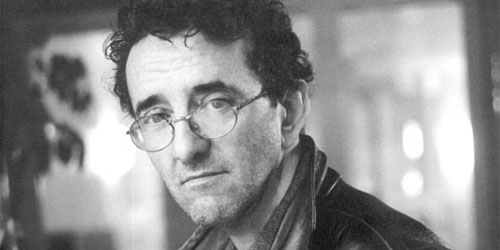Of those who have written about Juan Rodolfo Wilcock surely the great Chilean author of The Savage Detectives & 2666 is one of Wilcock's worthiest promoters. Here he is speaking of The Temple of the Iconoclasts. Bolaño surely gets it right when he states that the fantasy of Wilcock and the hilarity that his works provoke have something of the Marx Brothers about it. Italian critics have also alluded to Monty Python when trying to describe Wilcock’s wit. Maybe in a decade or so’s time everyone will be talking about how Wilcockian or Wilcockesque situations are. Whether this would signal a progression from a Kafkaesque universe remains to be seen for it seems that Wilcock’s prose is required to cure some pretty absurdly grotesque social ills and, I’m not sure whether Bolaño or Bianciotti got things more correct but Bolaño is surely right in emphasising that Wilcock’s wit – inspired, caustic and irreverent – is pretty unique.
The Temple of the Iconoclasts (La Sinagoga degli Iconoclasti) which was first published in Italy in 1972 is without doubt one of the most inspired, irreverent, witty and caustic books of the twentieth century. Very much influenced by Borges, Alfonso Reyes and Marcel Schwob and these in their turn indebted, in the manner of distorted mirrors, to the prose of the French Encyclopedists, The Temple of the Iconoclasts is a collection of biographies of delirious inventors, adventurers, scientists and artists. According to the Argentine writer Hector Bianciotti the book can be read “as acomedie humaine in which the bitter rage of Celine is hidden beneath Marx Brother type gags”. I don’t believe that any bitter rage (let alone the bitter rage of a Celine) is squatting in the prose of Wilcock. His characters when they are wicked are so out of an excess of goodness, and when they are good are reckless and therefore to be feared but not to be feared more than any other human being. Wilcock’s prose- methodical, always sure of itself, subtle even when it deals with awkward or even immodest subjects gravitates towards sympathy and forgiveness rather than rancour. From Wilcock’s wit (and The Temple of the Iconoclasts is essentially a work of humour) no one is spared.
Some of the characters did in fact exist, like Hanns Hòrbiger, the Austrian scientist who advanced the theory of successive moons and whose disciples included Hitler. With others it is possible that they actually existed like that André Lebran who is “remembered, infrequently remembered, in fact not remembered at all, as the inventor of the pentacycle or the bicycle with five wheels”. Some of the characters are heroic, like the Philippine José Valdés y Prom, telepathist and hynoptist. Others are beings of an absolute innocence, that is to say, saintly, like the Canadian emigrant from Armenia Aram Kugiungian who would became reincarnated or (who would transmigrate) into hundreds or even thousands of people, a phenomenon about which he “always replied that he felt nothing special, rather that he felt nothing at all except a vague sense of not being alone in the world”. One should not neglect the story of Llorenç Riber, a Catalan theatre director who was able to bring Wittgenstein’s Philosophical Investigations on to the stage wearing out through nervous breakdowns not just the most savage reviewers but also the occasional theatre goers. Or the inventor of Canarian extraction Jesús Piea Planas, father of the Ferris-wheel type roasting spit operated by four tortoises or the hermetic elastic panties for bitches in heat or the mouse trap operated by photoelectric cells and guillotine which is to be placed in front of the mousehole. These thirty five biographies summons one to a rapturous and uproarious read of one of the greatest and strangest (with all the revolutionary implications that this word holds) writers of this century and which no good reader should neglect.

No comments:
Post a Comment